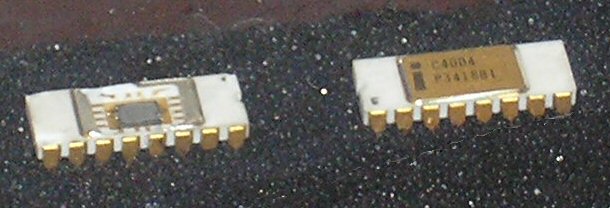 |
| Intel 4003 shift register |
The last of the original MCS-4 chips I need to emulate for the Busicom 141-PF re-creation is the i4003 shift register. I expected this to be simple: it's a 10-bit shift register with a clock input, a serial input, a serial output, 10 parallel outputs, and a parallel output enable input. How complex could this be?
In my mind I was picturing one Verilog
always block for the shift register and a continuous assignment statement for the output enables. Four lines of code plus the module definition.
As it turns, the i4003 shift register is a more complicated chip than I expected.



